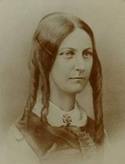 Missouri Heroine, Mary Whitney Phelps, being an orphan herself, could empathize with the lost and suffering children of the numerous dead and missing Missouri veterans during the Civil War. An early settler in Springfield, Missouri, with her husband, Phelps became deeply involved in the plight of children who lost one or both parents during the bloody battles in southwest Missouri and Arkansas.
Missouri Heroine, Mary Whitney Phelps, being an orphan herself, could empathize with the lost and suffering children of the numerous dead and missing Missouri veterans during the Civil War. An early settler in Springfield, Missouri, with her husband, Phelps became deeply involved in the plight of children who lost one or both parents during the bloody battles in southwest Missouri and Arkansas.
Mary Whitney was born in Portland, Maine, in 1813. Mary’s father, a sea-captain, was lost during a storm and shortly afterward her mother died leaving her an orphan. Mary had gotten married young, but soon divorced, supporting herself as a seamstress. In 1837, she married John S. Phelps, who had recently been admitted to the bar and shortly after the nuptials, they moved to St. Louis, Missouri. Profiting on the advice of friends in that city, they moved to Springfield to create their new home.
The Phelps established a thousand acre plantation and John Phelps was quickly elected to state office and later served an 18-year term as the Congressman from Greene County Missouri. When the Civil War broke out, he returned to Missouri and formed an infantry regiment that fought for the Union at Pea Ridge.
While her husband was off being a politician and a soldier, Mary ran the farm, built a house, and raised their family. A staunch Unionist, she brought supplies to the armies that fought at Wilson’s Creek and Pea Ridge and tended to the wounded soldiers. She’s probably most famous for her actions after the first Union General was killed in combat, General Nathaniel Lyon. Mary Phelps protected his body, which had been abandoned in Springfield during the Union’s retreat to Rolla after the Battle of Wilson’s Creek. Mrs. Phelps took the body to the farm and later temporarily buried it until his family could come and claim the body.
In 1866, Congress awarded her $20,000 for her services in caring for General Lyon’s body and caring for the orphans that the violence in Missouri created. When the money ran out she organized fund-raisers. Phelps ran at least three different homes for orphans during and after the war and founded the Mary Phelps Institute for Young Ladies in 1868. The Institute served orphaned, half-orphaned and indigent girls.
When John became Governor in 1877, Mary did not live in the Governor’s Mansion, nor did she attend the inauguration due to ill-health. She died January 15, 1878 of pneumonia and rests with her husband John, who died in 1886, at the Hazelwood Cemetery in Springfield, Missouri.
Missouri Heroine, Mary Phelps, was so much more that just an orphan’s advocate, she epitomized the staunch bravery and perseverance that inspired so many of her gender during this country’s greatest trial.
Bummer

